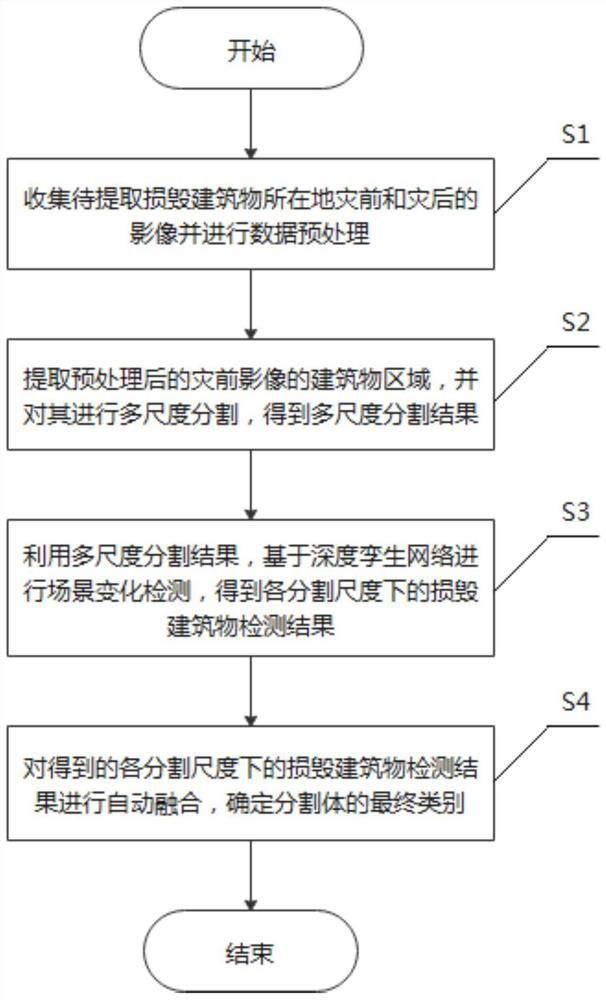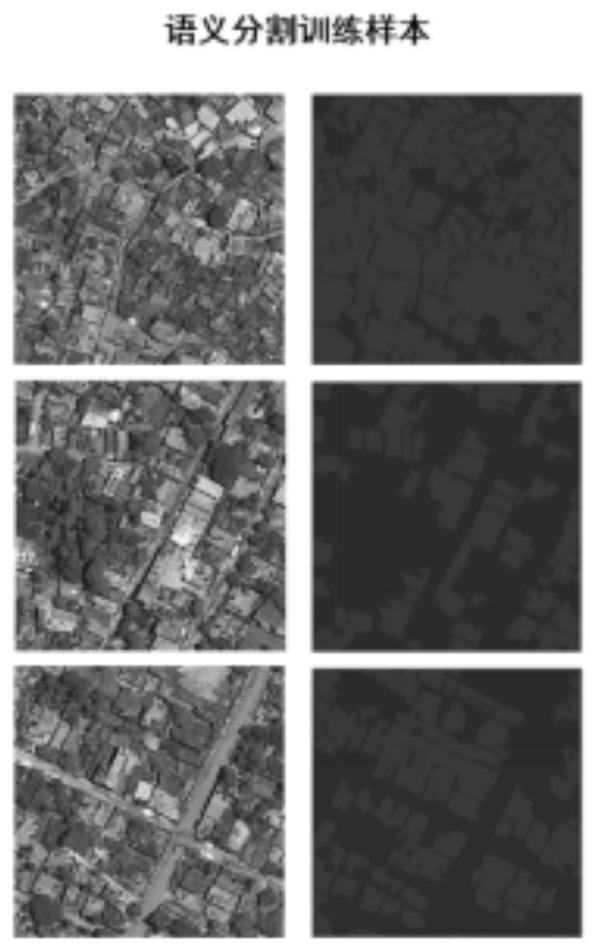Extraction of damaged buildings from remote sensing images based on multi-scale scene change detection
A technology of scene changes and remote sensing images, applied in the directions of instruments, calculations, character and pattern recognition, etc., can solve the problems of blurred building boundaries, extraction interference of damaged buildings, lack of task-specific thinking, etc., and achieve the effect of retaining outline information
- Summary
- Abstract
- Description
- Claims
- Application Information
AI Technical Summary
Problems solved by technology
Method used
Image
Examples
Embodiment Construction
[0045] In order to make the object, technical solution and advantages of the present invention clearer, the present invention will be further described in detail below in conjunction with the accompanying drawings and embodiments. It should be understood that the specific embodiments described here are only used to explain the present invention, not to limit the present invention.
[0046] Please refer to figure 1 The present invention provides a method for extracting damaged buildings from remote sensing images based on multi-scale scene change detection, comprising the following steps:
[0047] S1. Collect pre-disaster and post-disaster images of the damaged buildings to be extracted and perform data preprocessing;
[0048] In the embodiment of the present invention, step S1 includes the following sub-steps:
[0049] S11. Collect pre-disaster and post-disaster images of the location of the damaged building to be extracted;
[0050] S12. With the help of ENVI Classic softwar...
PUM
 Login to View More
Login to View More Abstract
Description
Claims
Application Information
 Login to View More
Login to View More - R&D
- Intellectual Property
- Life Sciences
- Materials
- Tech Scout
- Unparalleled Data Quality
- Higher Quality Content
- 60% Fewer Hallucinations
Browse by: Latest US Patents, China's latest patents, Technical Efficacy Thesaurus, Application Domain, Technology Topic, Popular Technical Reports.
© 2025 PatSnap. All rights reserved.Legal|Privacy policy|Modern Slavery Act Transparency Statement|Sitemap|About US| Contact US: help@patsnap.com



